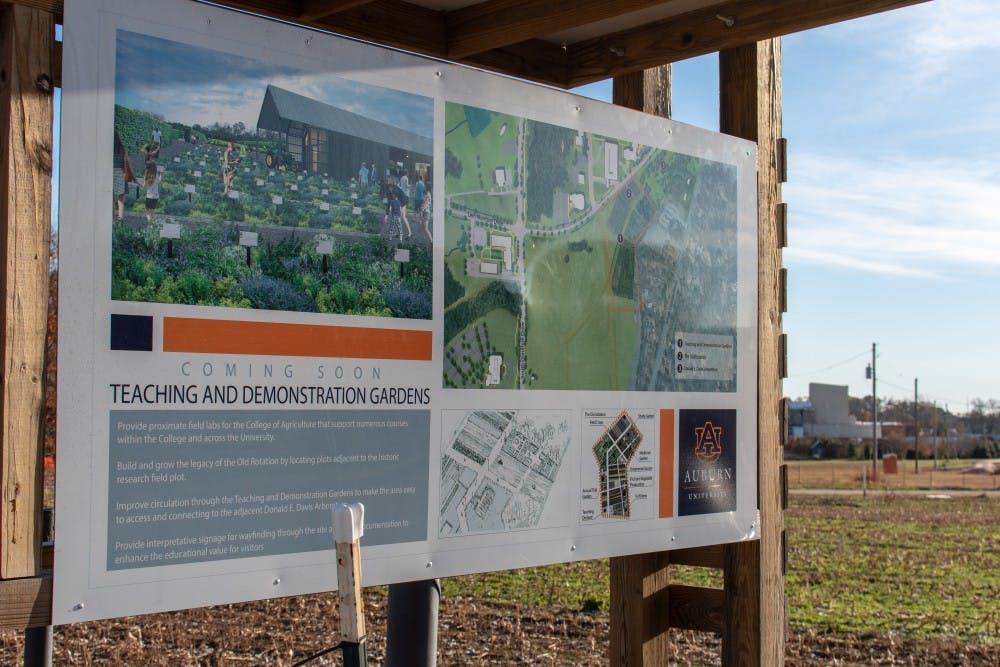The College of Agriculture’s goal is to develop students who will be leaders in solving complex and emerging issues in agricultural, food and environmental sciences, and the new Teaching and Demonstration Garden is intended to foster this mission.
The garden is structurally designed to serve as an academic space, or simply as an outdoor teaching laboratory for students.
According to Dave Williams, professor of horticulture and one of the leading forces behind this project, it’s projected that 1,500 students will be directly academically engaged with the project.
Seventeen horticulture classes will use the garden for different activities, as well as at least 20 other various courses.
“It has a historical foundation, but we really wanted to provide a place that was really better efficient use of space and to fundamentally engage students,” Williams said. “That’s why we’re here — to create the next generation of leaders. In our case, that’s primarily in agriculture, but we have the opportunity to engage students from across campus. We envision opportunities for students in different disciplines to have the chance to be a part of understanding where all the food comes from, understanding how it’s produced and really being part of the hands-on part.”
Williams said two new developments have just recently surfaced.
Firstly, they have just received the approval to begin developing plans for a pavilion.
“What we envision for the pavilion is a classroom setting with a maybe catering-type kitchen area with storage,” Williams said. “We also hope to make an outdoor seating area where we can have events and a covered staging area. What we hope is that this will be the entryway for the whole garden.”
He added that even though they have been approved to develop the plans, they do not have the money yet.
The second recent development includes an established memorandum of understanding between Tiger Dining, the dean of the College of Agriculture and the horticulture department.
The overall plan is to build greenhouses in the Teaching and Demonstration Garden.
Williams added that Tiger Dining would be bearing a lot of the burden.
“The reason for that is we’re going to provide a venue there for students to be engaged and involved with helping to produce food locally that will be part of our campus dining venues,” Williams said. “It’s helping support the Auburn Brand or Auburn Foods.”
The idea of the Auburn Food Brand is to produce or package things on campus that are sold on campus and is the brainchild of the Director of Tiger Dining Glenn Loughridge, according to Williams.
“What we want to do is grow crops in the greenhouse, hydroponically, and also externally in a plot dedicated to campus dining,” Williams said. “We want to produce all the ingredients for some of the foods provided on campus as part of the Auburn Food Brand.”
These developments are still in the works, but the garden is open for anyone to walk through and observe the plots, meaning it is not exclusively for classes.
“The idea is ultimately that this will be a place where you can walk through it and experience it,” Williams said.
He also said they hope to soon add interpretive signage at each of the posts, so people passing by can read about what is happening at that particular plot.
The garden also includes the “Old Rotation,” which is the oldest continuing crop-research plot in the world, and it continues to yield data that farmers in the Southeast constantly use.
This plot mainly includes cotton but rotates other crops as well. It is one of the many plots included in the large Teaching and Demonstration Garden.
“Overall, the primary mission of the garden is teaching,” Williams said. “It provides an environment where students can see, hear, touch, smell and taste it in real time.”
Do you like this story? The Plainsman doesn't accept money from tuition or student fees, and we don't charge a subscription fee. But you can donate to support The Plainsman.





